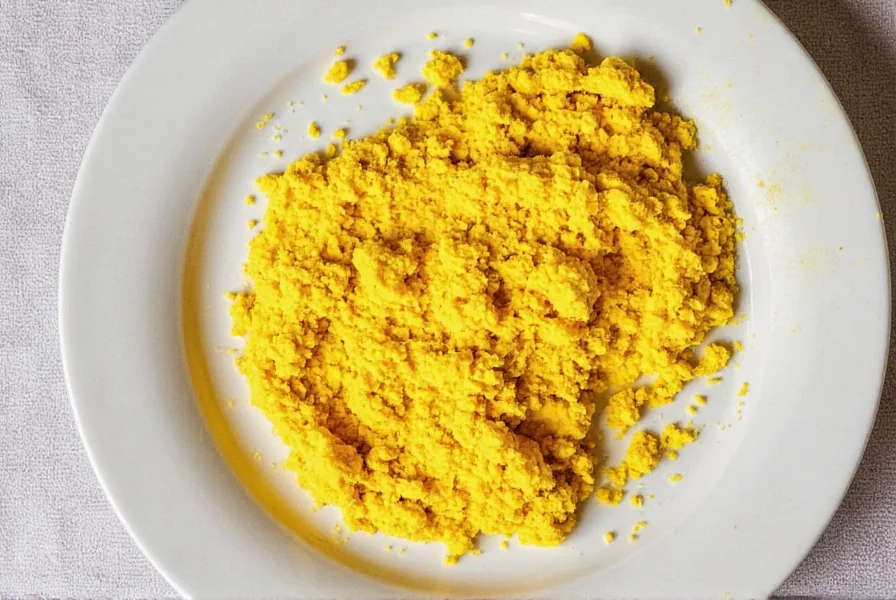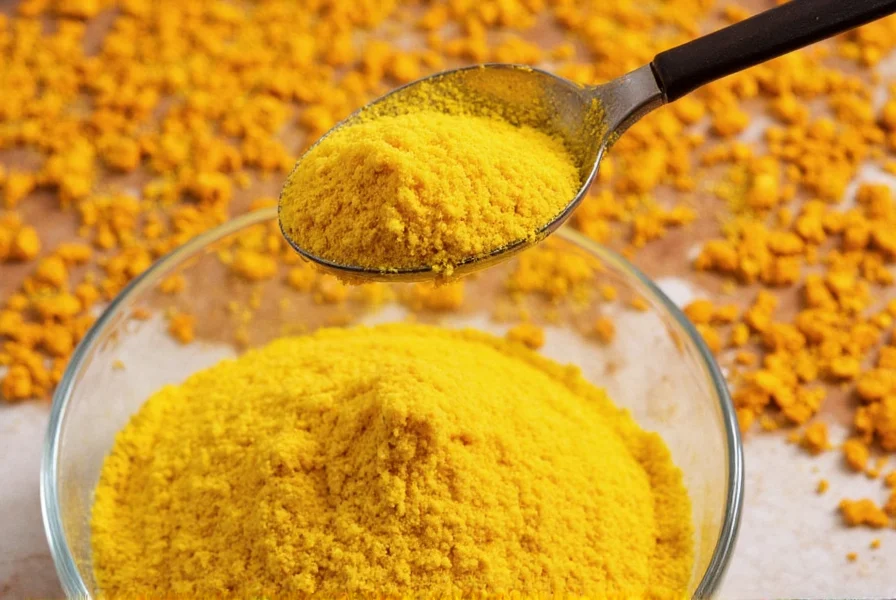When exploring how to use turmeric in cooking, understanding this golden spice's unique properties transforms ordinary dishes into culinary masterpieces. Turmeric isn't just a colorful addition—it brings complex earthy notes that complement both savory and sweet preparations when used thoughtfully. Many home cooks struggle with turmeric's potent staining ability and sometimes bitter aftertaste, but with proper technique, these challenges become manageable.
The Science Behind Turmeric's Culinary Magic
Turmeric contains curcumin, the compound responsible for both its brilliant yellow hue and many health benefits. This fat-soluble compound becomes significantly more bioavailable when combined with black pepper (piperine) and healthy fats like coconut oil or olive oil. Understanding this chemical interaction is essential for maximizing both flavor and nutritional value when cooking with turmeric.
Ground turmeric versus fresh turmeric root presents different culinary considerations. Fresh turmeric offers brighter, more complex citrus notes but requires proper preparation. Simply peel the knobby root with a spoon (avoiding waste of the precious flesh), then grate finely using a microplane. The fresh form contains higher curcumin levels but loses potency faster—store unused portions in an airtight container with a paper towel in the refrigerator for up to two weeks.
Perfect Turmeric Measurements for Every Dish
One of the most common mistakes when learning how to cook with turmeric is improper measurement. This potent spice quickly overwhelms dishes when used excessively. Follow these professional chef recommendations for balanced flavor:
| Dish Type | Ground Turmeric | Fresh Turmeric | Perfect Pairing |
|---|---|---|---|
| Rice or grains (4 servings) | 1/4 tsp | 1 tsp grated | Lemon zest + black pepper |
| Curry or stew (6 servings) | 1 tsp | 1 tbsp grated | Ginger + coconut milk |
| Roasted vegetables (4 servings) | 1/2 tsp | 2 tsp grated | Olive oil + garlic |
| Smoothies or golden milk | 1/8-1/4 tsp | 1/2 tsp grated | Black pepper + cinnamon |
Notice how the measurement for fresh turmeric consistently exceeds ground form—this accounts for the moisture content in the root. Always add turmeric to hot oil first when making curries or sautés; this "blooms" the spice, releasing maximum flavor compounds while reducing potential bitterness.
Avoiding Common Turmeric Cooking Mistakes
Even experienced cooks encounter challenges with turmeric. Understanding these pitfalls ensures perfect results every time:
Staining Solutions
Turmeric's vibrant color transfers easily to surfaces. Protect your kitchen with these practical tips:
- Use glass or stainless steel bowls instead of plastic when preparing turmeric
- Immediately clean cutting boards with baking soda paste after use
- Wear gloves when handling fresh turmeric to prevent yellowed fingertips
- Add a splash of vinegar to dishwater to prevent yellow residue on dishes
Flavor Balance Techniques
Turmeric develops bitterness when exposed to prolonged high heat. For optimal flavor when cooking with turmeric:
- Add ground turmeric during the last 10-15 minutes of cooking
- Combine with balancing flavors like citrus, honey, or coconut
- Never exceed 1 teaspoon per 6-serving dish without professional guidance
- Toast whole turmeric root briefly before grinding for deeper flavor

Regional Turmeric Cooking Traditions
Different culinary traditions have perfected turmeric usage over centuries. Understanding these approaches provides valuable insight for home cooks exploring how to use turmeric in cooking:
Indian Cuisine: Turmeric forms the foundation of most curry blends. In authentic preparations, it's always combined with black pepper and cooked in ghee or mustard oil. Traditional Indian cooks add turmeric early in the cooking process when making dry spice blends (tadka), but later when preparing wet curries to preserve flavor.
Thai Cooking: Fresh turmeric appears in many curry pastes and soups. Thai chefs typically pair it with lemongrass, galangal, and kaffir lime leaves. The fresh root provides brighter flavor notes that complement coconut-based dishes.
Middle Eastern Dishes: Turmeric appears in rice dishes and spice blends like baharat. It's used more sparingly here than in Indian cooking, often combined with saffron for complex golden hues without overwhelming flavor.
Health-Optimized Turmeric Cooking Methods
For those interested in cooking with turmeric for health benefits, specific preparation methods maximize curcumin absorption. Scientific research shows that combining turmeric with black pepper increases bioavailability by up to 2000%. Additionally, incorporating healthy fats helps the body absorb this fat-soluble compound.
Create a health-optimized turmeric blend by mixing 1 teaspoon ground turmeric with 1/8 teaspoon black pepper and 1 teaspoon coconut oil. Heat gently for 1-2 minutes before adding to dishes. This simple technique transforms ordinary turmeric usage into a significantly more beneficial preparation.
When preparing golden milk or turmeric tea, always include both black pepper and a fat source. Many commercial recipes omit these critical components, dramatically reducing potential health benefits. For maximum effect, use freshly ground black pepper rather than pre-ground varieties.

Advanced Turmeric Techniques for Home Chefs
Once you've mastered basic turmeric usage, these professional techniques elevate your cooking:
Turmeric Oil Infusion
Create versatile turmeric oil by heating 1 cup neutral oil with 2 tablespoons ground turmeric and 1 teaspoon black pepper over low heat for 15 minutes. Strain and store in a dark bottle. This golden oil adds instant color and flavor to soups, dips, and dressings without overwhelming dishes.
Preserving Fresh Turmeric
Extend fresh turmeric's shelf life by peeling, slicing, and freezing in ice cube trays with water or oil. Frozen turmeric cubes maintain potency for up to 6 months and can be added directly to cooking. Alternatively, pickle turmeric slices in apple cider vinegar with ginger for a flavorful condiment.
Color Correction Techniques
Accidentally added too much turmeric? Rescue your dish with these methods:
- Add acid (lemon juice or vinegar) to brighten and balance color
- Incorporate dairy or coconut milk to mellow intensity
- Add complementary spices like cumin or coriander to redirect flavor profile
- For soups or stews, add potato chunks which absorb excess color
Conclusion: Mastering Turmeric in Your Kitchen
Learning how to cook with turmeric effectively transforms this potentially challenging spice into a kitchen staple. By understanding proper measurements, flavor pairings, and preparation techniques, you unlock turmeric's full potential for both culinary excellence and health benefits. Remember that less is often more with this potent spice—start with small amounts and adjust to taste. With practice, you'll develop an intuitive sense for when and how much turmeric to use in various dishes, creating beautifully colored, flavorful meals that showcase this ancient spice's modern culinary relevance.
Does cooking destroy turmeric's health benefits?
Moderate cooking actually enhances turmeric's bioavailability, but prolonged high heat can degrade curcumin. For maximum benefits, add turmeric during the last 10-15 minutes of cooking and always combine with black pepper and healthy fats.
Can I substitute fresh turmeric for ground in recipes?
Yes, but use three times the amount of fresh turmeric compared to ground. One teaspoon of freshly grated turmeric equals approximately 1/3 teaspoon ground turmeric. Fresh turmeric provides brighter, more complex flavor notes.
Why does my turmeric-stained cutting board remain yellow?
Turmeric contains curcumin, which binds strongly to surfaces. To remove stains, make a paste of baking soda and hydrogen peroxide, apply to the stain, let sit for 15 minutes, then scrub. For persistent stains, sunlight exposure can naturally bleach the color over time.
How can I prevent turmeric from making my dishes bitter?
Bitterness occurs when turmeric is exposed to prolonged high heat. To prevent this, add ground turmeric during the last 10-15 minutes of cooking. For fresh turmeric, brief cooking preserves flavor without bitterness. Always balance with complementary flavors like citrus, honey, or coconut.
What's the best way to store turmeric for maximum freshness?
Store ground turmeric in an airtight container away from light and heat—it remains potent for 6-12 months. Fresh turmeric root keeps for 2-3 weeks in the refrigerator when stored in a paper bag with a damp paper towel. For longer storage, freeze grated turmeric in oil cubes.











 浙公网安备
33010002000092号
浙公网安备
33010002000092号 浙B2-20120091-4
浙B2-20120091-4